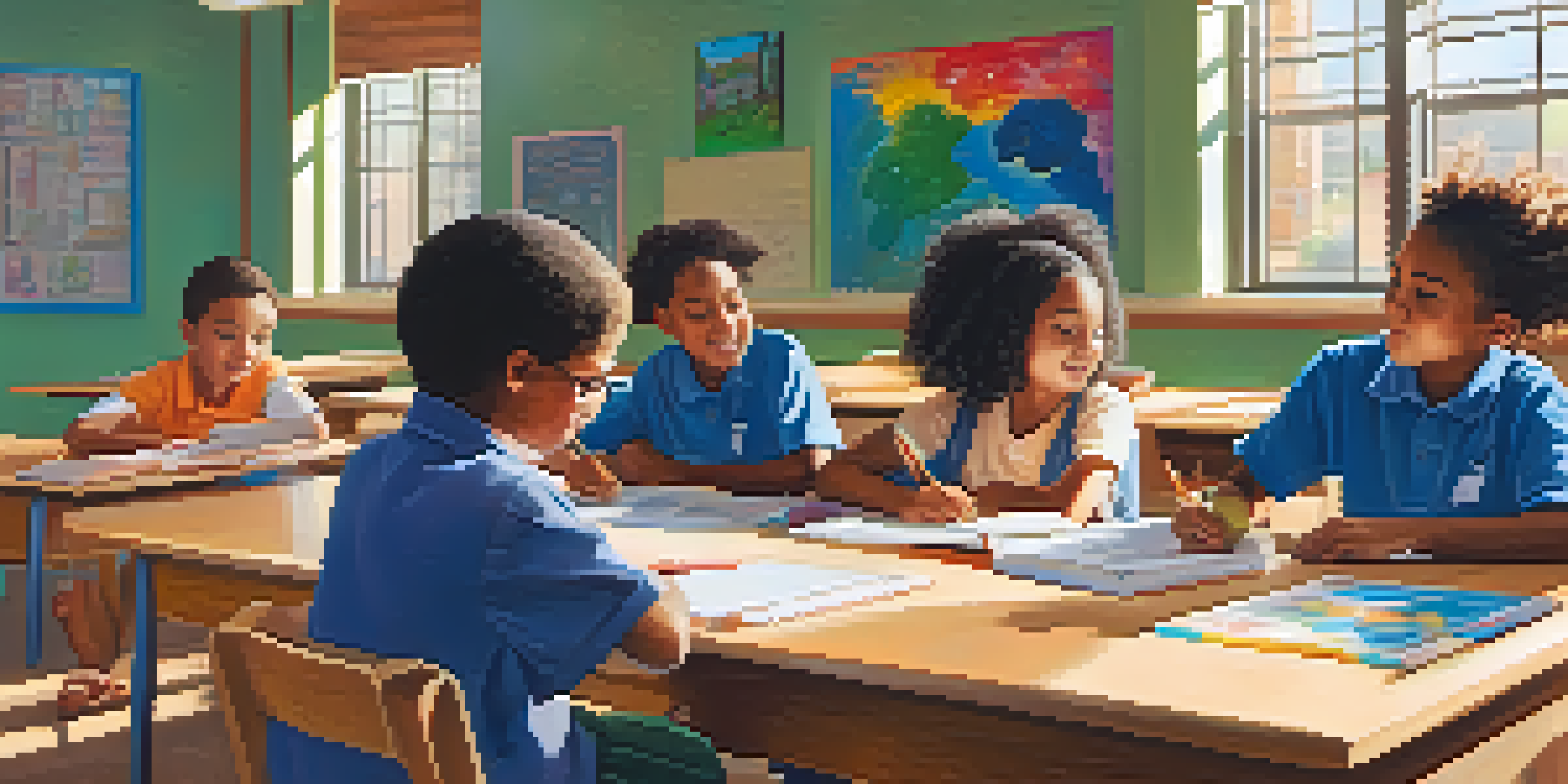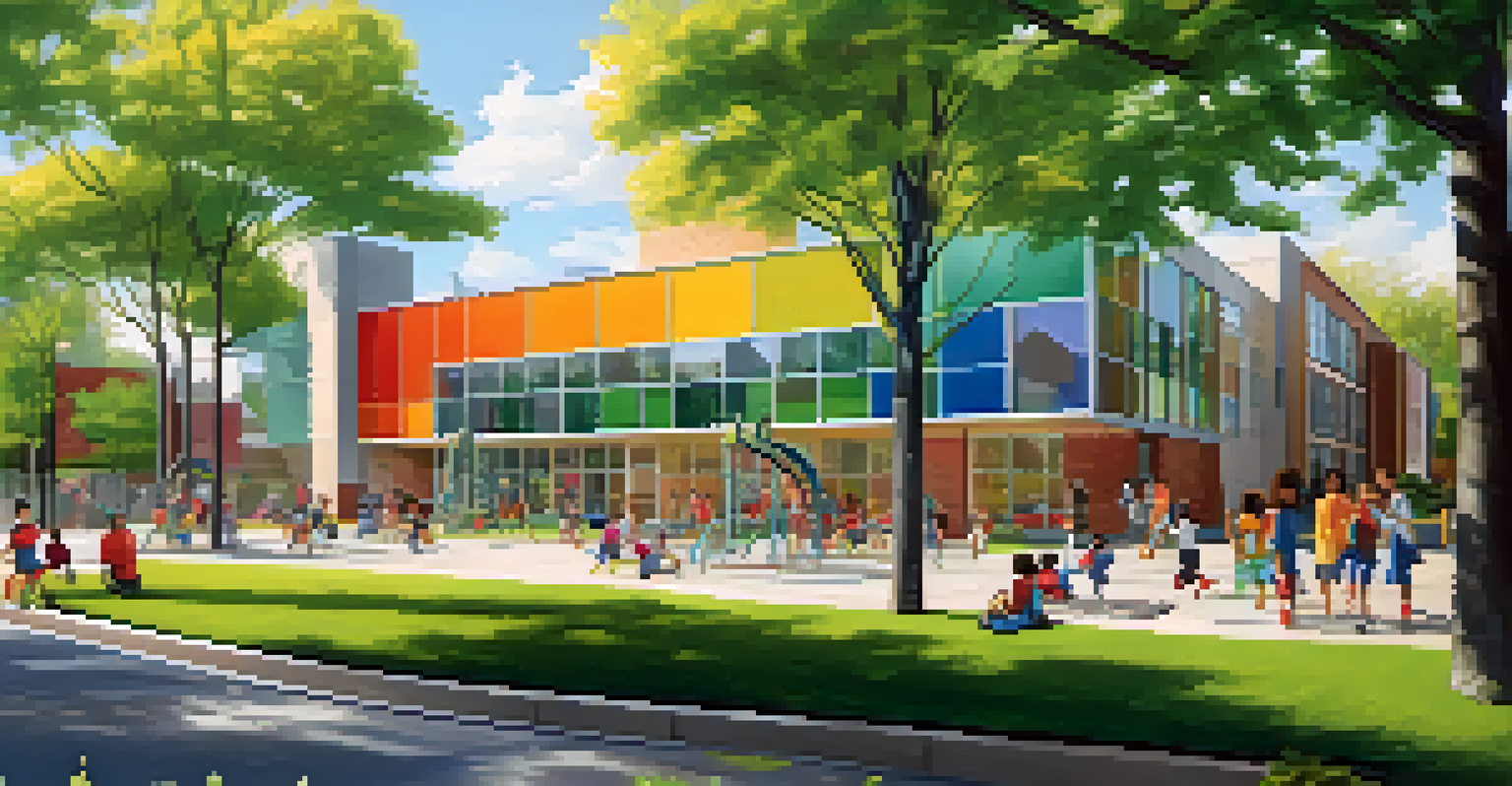Examining the Impact of Charter Schools on NYC Public Education

Understanding Charter Schools and Their Role in NYC
Charter schools are publicly funded but operate independently from traditional school districts. This unique structure allows them to implement innovative educational strategies, attracting parents seeking alternatives to standard public schools. In New York City, charter schools have gained significant traction, providing options in neighborhoods where educational quality can vary greatly.
Education is the most powerful weapon which you can use to change the world.
While they are designed to enhance student performance through flexibility and choice, the debate over their effectiveness continues. Some advocates argue that charter schools foster competition that can drive improvements in local public schools, while critics express concerns about funding and access. Understanding this dynamic is crucial for grasping their impact on the overall education landscape.
As we explore the influence of charter schools in NYC, it’s essential to consider both their successes and challenges. From enrollment trends to academic outcomes, the story of charter schools is multifaceted and reflects broader discussions about equity and quality in public education.
Enrollment Trends: Who Chooses Charter Schools?
Enrollment in charter schools has surged in NYC over the past decade, with many parents drawn to their promises of smaller class sizes and specialized programs. This trend underscores the desire for diverse educational options, especially in communities where traditional public schools may be overcrowded or underperforming. Families are increasingly looking for schools that align with their values and educational goals.

Interestingly, the demographics of charter school students often differ from those in traditional public schools. Many charter schools in NYC serve a high percentage of students from low-income households, which raises questions about access and equity. Understanding who chooses charter schools can provide insights into the broader implications for public education.
Charter Schools Offer Choices
Charter schools provide parents with alternative educational options, especially in areas where traditional public schools may be lacking.
Moreover, the popularity of charter schools can lead to a shift in student populations among public schools. This shift can sometimes exacerbate inequalities, making it vital to examine how these enrollment trends affect the remaining public school system and the students who attend them.
Academic Performance: Do Charter Schools Deliver?
One of the primary arguments for charter schools is their potential to improve academic performance. Numerous studies have attempted to gauge their effectiveness compared to traditional public schools, with mixed results. While some charter schools boast impressive test scores and graduation rates, others struggle to meet educational benchmarks, leading to heated debates among educators and policymakers.
The function of education is to teach one to think intensively and to think critically. Intelligence plus character – that is the goal of true education.
It’s important to look beyond test scores, though. Academic success can be measured in various ways, including student engagement, critical thinking skills, and college readiness. Some charter schools focus on holistic education, emphasizing social-emotional learning alongside academics, which can provide a more well-rounded educational experience.
Ultimately, the question of whether charter schools deliver on their promises is complex. It requires a nuanced understanding of both qualitative and quantitative data, as well as a recognition of the unique challenges each school faces in its mission to educate.
Funding Dynamics: How Charter Schools Affect Public Resources
Funding is a critical aspect of the charter school debate, particularly in a city as large and diverse as New York. Charter schools receive public funding based on enrollment, which can divert resources from traditional public schools. This funding model raises concerns about equity, especially in neighborhoods where schools are already struggling with limited budgets.
Many argue that the influx of charter schools can create a competitive environment that benefits all students, as public schools may be motivated to improve in response. However, critics point out that this competition often comes at a cost, leading to budget cuts and program reductions in traditional schools. Balancing resources between charter and public schools remains a contentious issue.
Mixed Results in Academic Performance
While some charter schools demonstrate impressive academic outcomes, others struggle, highlighting the complexity of measuring their effectiveness.
Understanding the financial implications of charter schools is vital to grasping their overall impact on NYC education. As funding dynamics evolve, the future of both charter and public schools will depend on collaborative efforts to ensure that all students have access to quality education.
Community Perspectives: How Parents and Teachers Feel
Community perspectives on charter schools can vary widely, reflecting the diverse views of parents, teachers, and local residents. Many parents appreciate the options that charter schools provide, often citing smaller class sizes and specialized programs as significant benefits. However, others express concerns about the implications for public school funding and the overall community fabric.
Teachers in traditional public schools may have mixed feelings about charter schools as well. Some view them as competitors that siphon off resources and attention, while others recognize the innovative practices that can emerge from charter models. This contrast highlights the need for open dialogue among stakeholders to address concerns and share best practices.
Ultimately, community engagement is essential in shaping the conversation around charter schools. Listening to the voices of those directly affected can lead to more informed decisions and policies that prioritize the educational needs of all students.
The Impact on Special Education Services
The treatment of special education within charter schools is another significant consideration. While some charter schools are praised for their inclusive practices and tailored support for students with disabilities, others have faced criticism for inadequate services. This inconsistency can leave families feeling uncertain about their options in terms of quality education for children with special needs.
In NYC, the law requires charter schools to provide services to students with disabilities, but the implementation can vary widely. Some schools go above and beyond, offering personalized learning plans and resources, while others may struggle to meet legal obligations. This disparity raises important questions about equity and access in education.
Funding Concerns Persist
The funding dynamics between charter and public schools raise important questions about equity and resource allocation in education.
As we examine the role of charter schools in supporting special education, it's crucial to advocate for policies that ensure all students, regardless of their needs, receive the education they deserve. Collaboration between charter and public schools can create a more supportive environment for everyone.
Future of Charter Schools in NYC: Trends and Predictions
The future of charter schools in New York City is a hot topic, especially as educational needs continue to evolve. With ongoing debates about funding, accountability, and educational quality, it’s clear that charter schools will play a significant role in shaping the landscape of public education. Trends suggest an increasing emphasis on collaboration between charter and public schools, which could lead to improved outcomes for students.
As parents and educators demand more accountability and transparency, charter schools may need to adapt to maintain public trust. Innovations in educational practices, along with data-driven decision-making, could pave the way for more effective charter models that prioritize student success. The landscape may shift towards a hybrid approach that blends the best of both charter and traditional public schools.

Ultimately, the evolution of charter schools in NYC will depend on the collective efforts of educators, policymakers, and communities. By fostering a collaborative environment, we can work towards a future where all students have access to high-quality education, regardless of the school model.